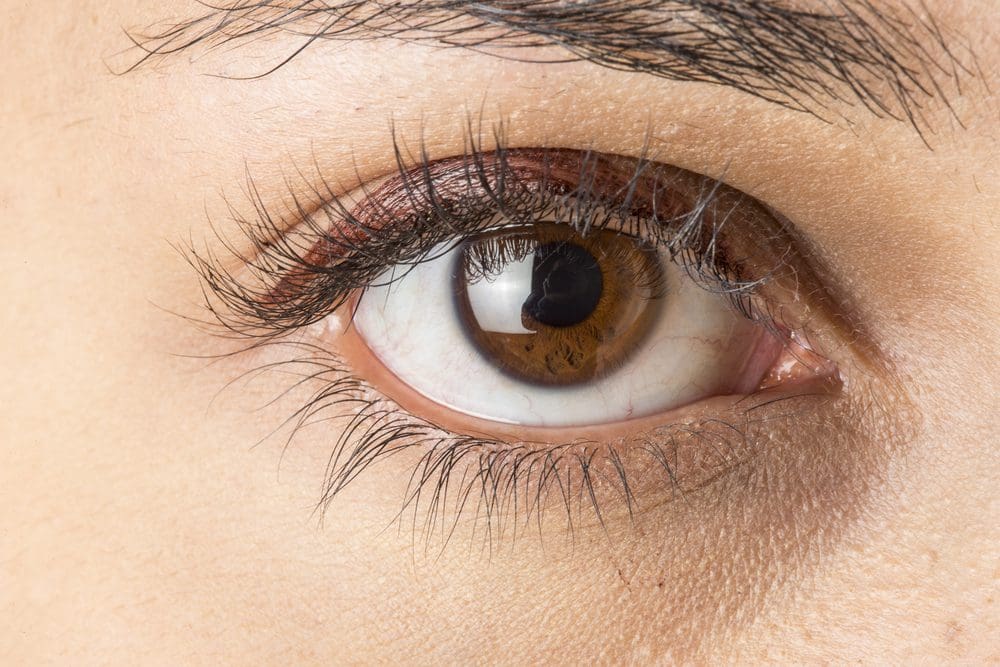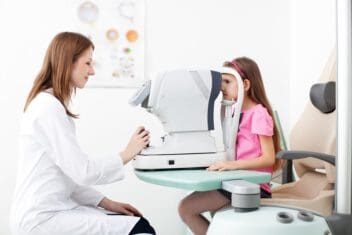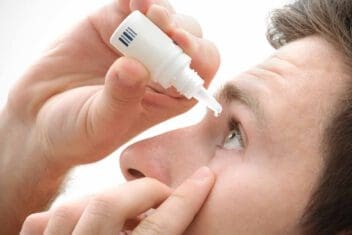Dry Eyes: Causes, Symptoms & Treatments
Home /
Last Updated:
Dry eyes occur when your tears are not able to sufficiently lubricate your eyes. This can mean you don’t produce enough tears, or your tears are not working as they should.
he most common symptom of dry eyes is discomfort. Your eyes may have a burning or stinging sensation. Other symptoms of dry eye include stringy mucus around the eyes, sensitivity to light, eye redness, and watery eyes.
Everyone experiences dry eyes from time to time, often due to environmental conditions, such as dry weather. Dry eyes are also more likely as we age.
Many common conditions can lead to dry eyes, such as allergies and evaporative eye disease. Some medications include dry eyes as a potential side effect. If your tear glands are damaged in any way, it can influence tear production and lead to dry eyes.
Dry Eyes can also be a symptom of an underlying condition. Diabetes, thyroid disorders, and some autoimmune conditions can cause eye dryness. These conditions, however, come with other symptoms.
Often, dry eyes can be managed at home with over-the-counter remedies like lubricating eye drops and some lifestyle changes. If your dry eyes persist or worsen, talk to a doctor about other treatment approaches.
Overview of Dry Eyes
Dry eyes are, quite simply, eyes that are not adequately lubricated with tears. This results in a burning, stinging, or itching sensation in the eyes.
The eyes are continuously producing tears to remain moist. With every blink, tears are distributed across the eyes, allowing the eye’s surface to stay clear.

Tears are made up of water, oil, and mucus. If there are any issues with the distribution of these three components, it can lead to dry eyes. For example, mucus helps to spread the tears evenly across the eyes. If there isn’t enough mucus in tears, there may be dry patches on the eyes that aren’t thoroughly lubricated.
Most people have dry eyes from time to time. They can be due to dry weather, air conditioning, or lack of blinking. Generally, the condition improves when you leave the environment that is causing the issue or by giving your eyes a break.
You deserve clear vision. We can help.
With 135+ locations and over 2.5 million procedures performed, our board-certified eye surgeons deliver results you can trust.
Your journey to better vision starts here.
Other times, dry eyes persist due to a wide range of issues. Allergies, autoimmune conditions, and other medical issues can lead to prolonged dry eyes. While dry eyes can be treated with eye drops and lifestyle changes, it’s important to assess the underlying cause to truly address the situation.
Symptoms of Dry Eyes
Generally, symptoms of dry eyes can include:
- Scratchy, burning, or stinging sensations in the eyes.
- Stringy mucus in or around the eyes.
- Photophobia (sensitivity to light).
- Eye redness.
- Feeling like you have something in your eye.
- Blurred vision.
- Watery eyes.
People with dry eyes often rub their eyes frequently. This rubbing can worsen the issue, causing heightened sensitivity on the skin surrounding the eyes as well.
Causes of Dry Eyes
Here are some of the most common causes of dry eyes:
- Aging: As we age, our eyes begin to produce fewer tears, and often, these tears are of poorer quality. It’s common for dry eyes to become more common after age 65.
- Hormonal fluctuations: Hormonal changes can lead to changes in tear production that cause dry eyes. Since women experience more hormonal changes as they near menopause, dry eyes are more common in women than men.
- Medication: Some medications can cause dry eyes as a side effect. Examples of medications that may lead to dry eyes include antihistamines, antidepressants, hormonal medications, and nasal decongestants.
- Environmental factors: Smoke, wind, and/or dry air can potentially contribute to eye dryness. While it should be fairly obvious if smoke is near your eyes, you may not realize how windy or dry it is outside. If you’re spending a lot of time outdoors, these conditions can greatly exacerbate your dry eyes.
- Poor nutrition: Vitamin A deficiency can lead to dry eyes. This is more common in developing parts of the world, but it does occur in the U.S., among people with diets that are lacking in vitamin A. Talk to your doctor about any supplements they may recommend to help.
- Eye injuries: Injury to the tear ducts can result in decreased tear production or other issues with tears, contributing to dry eyes.
- Prolonged work: Staring at screens for too long can lead to dry eyes. This is particularly true of computer work since people often don’t blink as frequently as they do otherwise.
- Extended contact lens wear: Wearing contact lenses for long periods of time can dry out the eyes, leading to discomfort. Switching to glasses for a few days can usually address the issue.
You deserve clear vision. We can help.
With 135+ locations and over 2.5 million procedures performed, our board-certified eye surgeons deliver results you can trust.
Your journey to better vision starts here.
Medical Causes
There are a variety of medical conditions that can lead to dry eyes.
Diabetes: People who have diabetes deal with decreased circulation in their eyes. This can lead to nerve damage, including damage to the nerves that control tear production. This condition affects insulin production. While not curable, it is treatable.

Diabetes can be very dangerous if left untreated, so visit a doctor if you experience several of the following:
- Extreme thirst, even after drinking
- Extreme hunger, even after eating
- Fatigue, even after sleeping
- Frequent urination
- Weight loss
- Fruity-smelling breath
- Eyesight problems
- Restlessness, irritability, and moodiness
If you have diabetes, talk to your doctor about how to prevent dry eyes or manage the condition. It’s imperative that you get regular exams from an ophthalmologist.
- Evaporative eye disease/evaporative dry eye: A very common eye disease, evaporative eye disease causes itchy, dry eyes and eyelid swelling. The disease causes the meibomian glands to not work as they should, and these are essential to tear production. The condition is more common among the elderly, people with oily skin, and people with diabetes, but anyone can get it.
- Treatment is usually simple, only requiring regular eye cleaning and potential diet changes. Some people may need antibiotics, ointments for their eyelids, and artificial tears.
- Blepharitis: While its cause isn’t fully understood, this disease causes dandruff-like buildups at the base of the eyelashes as well as irritation and inflammation of the eye. It is fairly easy to treat blepharitis with warm compresses. Sometimes, antibiotics and specific shampoos may be recommended by your doctor.
- Herpes simplex infections (HPV): It is very easy to spread HPV, and it often causes no symptoms or such mild symptoms that people may not realize they’re infected. Ocular herpes (the type that affects the eyes) is not curable, but it is treatable with antiviral eye drops, ointments, and/or pills, as determined appropriate by a doctor.
- Symptoms are largely what you’d expect of a person with dry eyes: swelling around the eye, redness, irritation, the sensation of a foreign body in the eye, watery discharge, and photophobia.
- Graft-versus-host disease (GVHD): This is a fairly serious condition that can arise when the body receives a bone marrow/stem cell transplant from a donor, and the body interprets the transplanted cells as invaders, attacking them. GVHD is more common with donor cells from a nonrelative. The disease is extremely serious but can often be treated.
- Dry eyes are one of many symptoms of chronic GVHD. This form can last a lifetime, but it can often be managed with medication so the person can live a relatively full and happy life.
- Rheumatoid arthritis: This condition causes stiffness, pain, swelling, and loss of motion. It sometimes can cause growth problems and eye inflammation (and by extension eye dryness). While not curable, rheumatoid arthritis is treatable. You should be able to live a full life, although may have occasional problems with pain and some specific ranges of motion.
- Sjögren’s syndrome: This condition is typically associated with women over 50 years old. At its most basic, this autoimmune disease attacks the body’s own glands that make tears and saliva, causing dryness.
- Other autoimmune diseases: Other types of autoimmune diseases can lead to dry eyes. For example, people who have lupus often have dry eyes.
- Congenital disorders: Dry eyes can be a symptom of certain congenital disorders. Congenital disorders are genetic in nature and can be passed down even if you don’t specifically have the disease. Some congenital disorders are quite serious but also rare. For example, familial dysautonomia generally affects only 1 in 3,600 people who are of Ashkenazi Jewish descent. Tell your doctor if you have a family history of any of the following:
- Familial dysautonomia (also called Riley-Day syndrome)
- Cystic fibrosis
- Allgrove syndrome
- Ectodermal dysplasia syndromes
- Any other condition that has symptom overlap with eye dryness or any other symptoms you are experiencing
How to Treat Dry Eyes
Mild cases of dry eyes can be treated relatively easily with home care methods. Your doctor may recommend the following:

- Take breaks when using the computer. Aim to take a break every 20 minutes by looking away from the screen. Make sure your computer monitor is positioned lower than your eyes. If its position is too high, your eyes will open wider, and this further dries out your eyes.
- Wear sunglasses when outside to protect against the sun’s rays as well as wind. The wraparound kind works best.
- Avoid smoky areas. Stay away from people who smoke, and if you smoke, aim to quit.
- Try a humidifier. This can moisten the air in your home or office, reducing the chances of dry eyes.
- Reposition air-conditioning vents so they aren’t directed at your eyes.
- Use over-the-counter artificial tears as needed. These can work to lubricate your eyes occasionally. If you find you rely on them daily, talk to your doctor about other solutions.
- Cleanse your eyes regularly. This removes bacteria that can cause blockages that lead to dry eyes.
- Use warm compresses. This can also remove debris and bacteria that can lead to infections and blockages. Place a warm washcloth over each eye for 30 seconds.
More serious or chronic cases of dry eyes may need the following dry eye treatment methods:
- Heat therapy: Often, dry eyes can be treated by introducing localized heat therapy to the eye lids and can help overcome meibohmian gland dysfunction (MGD).
- Steroid eye drops: These drops target inflammation, a significant contributing factor to dry eyes. These are usually used on a short-term basis since long-term use can result in more serious side effects.
- Allergy medication: If you have regular allergies, your doctor may put you on regular allergy medication to control your symptoms. This can reduce the severity and frequency of your dry eyes. Antihistamine eye drops may also be an option.
- Punctal plugs: Through surgery, these are small devices that are inserted into the tear drainage duct openings. These openings are found inside the corners of both the upper and lower eyelids. Once these openings are plugged, tears can’t drain there, resulting in more tears in the eyes.
Most importantly, visit an eye doctor for annual exams. They can manage your dry eyes and determine if an underlying issue is worsening the condition.
You deserve clear vision. We can help.
With 135+ locations and over 2.5 million procedures performed, our board-certified eye surgeons deliver results you can trust.
Your journey to better vision starts here.
References
- Dry Eyes: Symptoms & Causes. (March 2019). Mayo Clinic.
- Dry Eyes: Diagnosis & Treatment. (March 2019). Mayo Clinic.
- Children and Dry Eye. (September 2009). Jobson Medical Information.
- Dry Eyes in Children: Care Instructions. (July 2018). Government of Alberta.
- Are We Missing Dry Eye in Children? (December 2019). American Academy of Ophthalmology 2019.
- Dry Eye Syndrome in Patients With Mellitus: Prevalence, Etiology, and Clinical Characteristics. (April 2016). Journal of Ophthalmology.
- Sjogren’s Syndrome. (March 2016). MedlinePlus.
- Juvenile Arthritis. (April 2016). MedlinePlus.
- Graft-Versus-Host Disease. (November 2019). MedlinePlus.
- Diabetes in Young Children. (May 2018). Australian Department of Health.
- Blepharitis. (November 2019). MedlinePlus.
- Eye Herpes (Ocular Herpes). (November 2017). All About Vision.
- What You Need to Know About Evaporative Dry Eye. (June 2019). WebMD.
- Dry Eye. (July 2019). National Eye Institute.
This content is for informational purposes only. It may have been reviewed by a licensed physician, but is not intended to serve as a substitute for professional medical advice. Always consult your healthcare provider with any health concerns. For more, read our Privacy Policy and Editorial Policy.


